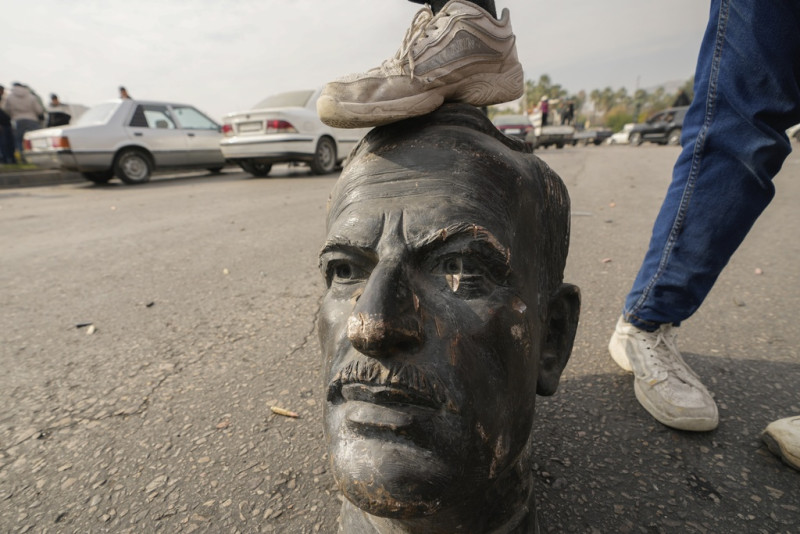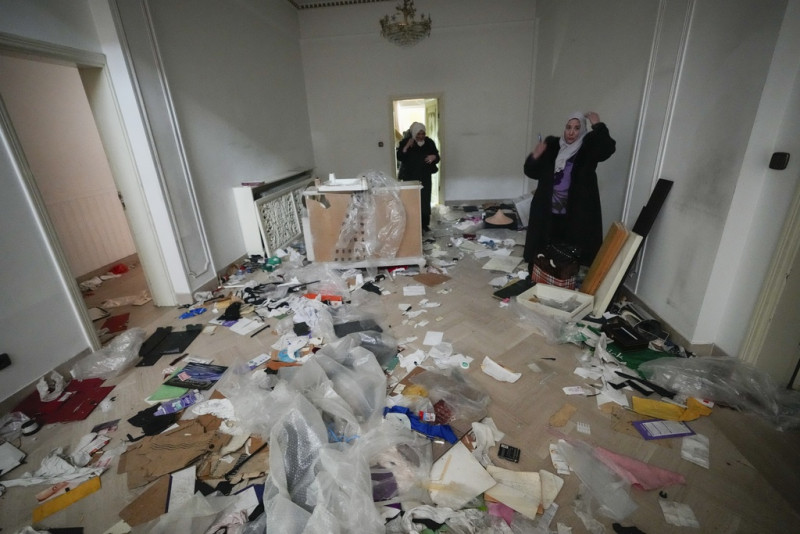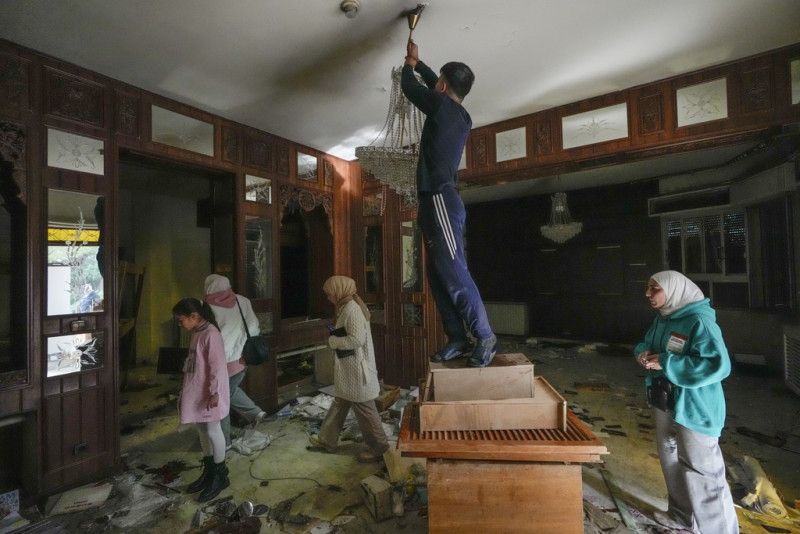Men, women and children roamed the six-story building, on the stairs of which documents were scattered.
Dozens of Syrians entered the residence of Syrian President Bashar al-Assad, which had previously been looted, an AFP journalist reported.
Men, women and children roamed the six-story building, on the stairs of which documents were scattered.
Syrian opposition fighters have taken over the presidential palace in Damascus after a rapid offensive seized control of the capital, marking the end of the al-Assad family’s 53-year rule of the country.
— in pictures https://t.co/y4TKj8VNdw pic.twitter.com/kSTPTZsZrt
— Al Jazeera English (@AJEnglish) December 8, 2024
According to the journalist, a reception hall of the presidential palace was completely burnt.
Russia’s decade long effort to prop up Syrian dictator Assad has failed, with rebels in full control after only one week of fighting.
Inside Assad’s presidential palace, Damascus. pic.twitter.com/wHVqtezBfq
— KyivPost (@KyivPost) December 8, 2024
A painting depicting Assad was lying on the floor at the ground floor entrance.
After the rebels captured Damascus, scores of people toppled and destroyed statues of Bashar al-Assad and his father, Hafez, in Aleppo, Hama, Deraa and elsewhere.
Hafez al-Assad ruled Syria from 1971 until his death in 200, when he was succeeded by Bashar. For many years after Hafez’s death, his statues symbolized the family’s control of the country. His portraits were hung everywhere, in public buildings, offices and schools, often next to those of his son. After five decades in power, most Syrians could no longer remember the time when Assad was not ruling the country.
In Damascus’s Umayyad Square, some celebrated the “liberation” by firing shots into the air while chants of “Allah Akbar” (God is great) were heard.
“We have been waiting for this day for a long time,” said Amer Bata, speaking to AFP by telephone. “I can’t believe I’m living this,” she added, breaking into sobs: “It’s starting a new story for Syria.”
Anti-Assad fighters were also seen taking pictures inside the presidential palace after the reported collapse of the Syrian president’s government in Damascus.https://t.co/EpBxlSSclv pic.twitter.com/IwP9qZWZeS
— DW News (@dwnews) December 8, 2024
In their announcement, on public television, the rebels spoke of the fall of the “tyrant” Assad and said they had released all prisoners who were “unjustly held”.
“Syria is ours, it does not belong to the Assad family,” chanted gunmen as they marched through the streets of Damascus, firing into the air.
Soldiers of the Syrian army were hastily shedding their uniforms and leaving the headquarters of the general staff, in Omeidaden Square. According to the director of the Syrian Observatory for Human Rights, Rami Abdel Rahman, Assad left Syria through Damascus International Airport, followed by high-ranking military and security officials.
Source :Skai
With a wealth of experience honed over 4+ years in journalism, I bring a seasoned voice to the world of news. Currently, I work as a freelance writer and editor, always seeking new opportunities to tell compelling stories in the field of world news.













